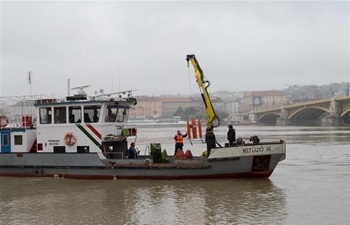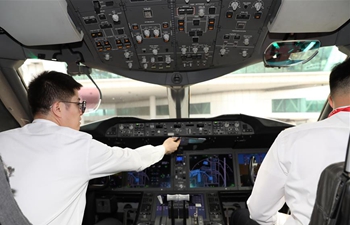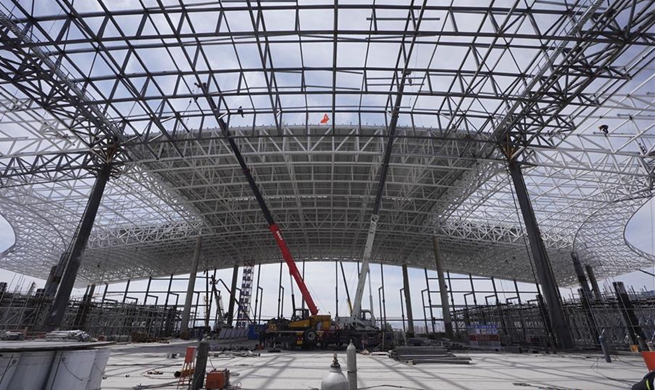HARBIN, May 31 (Xinhua) -- Two sides of the first highway bridge connecting China and Russia across the Heilongjiang River were joined together on Friday.
Measuring 1,284 meters long and 14.5 meters wide, the bridge across the Heilongjiang River, known in Russia as the Amur River, stretches from Heihe, a border city in northeast China's Heilongjiang Province, to the Russian city of Blagoveshchensk.
It is a key part of a 19.9 km-long highway project that starts from Jilin-Heilongjiang expressway and ends at a highway in Blagoveshchensk. An estimated 2.47 billion yuan (about 358 million U.S. dollars) will be spent on the whole project, with 566 million yuan from China and 1.9 billion yuan from Russia.
To ensure project quality, steel girders that withstand as low as minus 60 degrees Celsius were used by Chinese and Russian builders in the frigid region, together with 60,000 sets of steel bolts with high weatherability for connection.
Green ideas have been practiced in designing and construction of the bridge to minimize the impact on the river water ecosystem.
Huang Yunyong, general manager of a China-Russia joint venture for the project, said that they had purchased fish fry and released them into the upper river. Environmental protection authorities will strictly monitor the water quality and the survival of fish stocks during spawning season.
Heihe and Blagoveshchensk face each other across the Heilongjiang River. As China opens its door wider to the world, the two cities see more vibrant people-to-people exchange and trade ties.
However, the construction of cross-border infrastructure between China and Russia has long lagged behind, a bottleneck obstructing the accelerated growth of bilateral trade.
The highway bridge was first proposed by China and Russia in 1988. Construction of the bridge began in December 2016, and is expected to complete in October.
With the help of the bridge, the passenger flow between the two cities is expected to reach 1.4 million by 2020, triple the current figure. Cargo volume will see a 10-fold increase to 3 million tonnes.

















